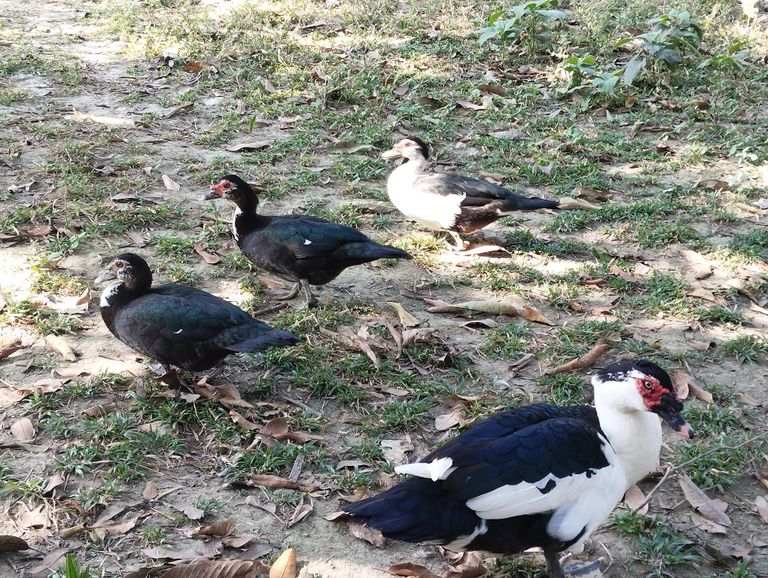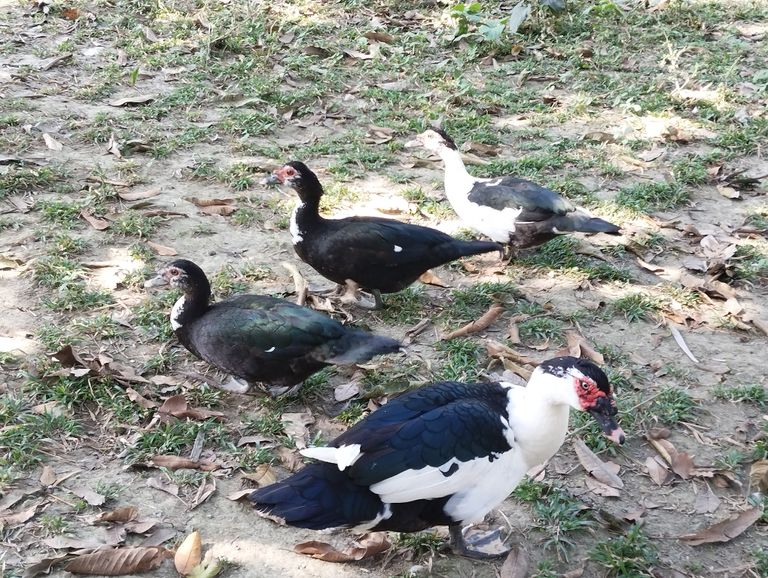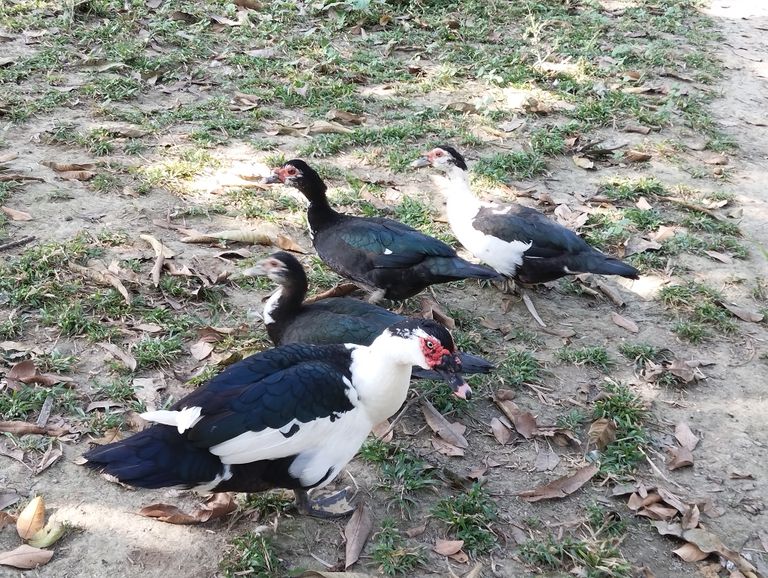
Chinese Duck Farming A Profitable and Sustainable Business.
Chinese duck farming is gaining popularity worldwide due to its high profitability, low maintenance costs, and ability to adapt to various environments. These ducks are known for their excellent meat and egg production, making them a great choice for both small-scale and commercial farmers. In this blog, we will explore the benefits, farming methods, and important considerations for raising Chinese ducks successfully.
Why Choose Chinese Ducks for Farming?
Chinese ducks, such as the Pekin, Muscovy, and Shaoxing breeds, offer several advantages to farmers:
- Fast Growth Rate – These ducks grow quickly and reach market weight in a short time.
- High Egg Production – Some Chinese duck breeds can lay up to 300 eggs per year.
- Hardy and Disease-Resistant – They adapt well to various climates and have strong resistance to common poultry diseases.
- Low Feeding Cost – Ducks can be raised on natural feed sources such as aquatic plants, insects, and kitchen waste.
- Sustainable Farming – Ducks can be integrated into rice farming, reducing pests and increasing soil fertility.
Setting Up a Chinese Duck Farm
- Selecting the Right Breed
There are several Chinese duck breeds to choose from, each with unique characteristics:
Pekin Duck – Fast-growing, high meat yield, and commonly used for commercial meat production.
Muscovy Duck – Known for lean meat and quiet nature.
Shaoxing Duck – Excellent for egg production.
Jinding Duck – A high egg-producing breed similar to the Shaoxing.
Choose a breed based on your business goals—whether you want to focus on meat, eggs, or both.
- Housing and Farm Management
Proper housing ensures the ducks stay healthy and productive. Consider the following when setting up a duck farm:
Shelter – Ducks need a dry, well-ventilated shelter that protects them from extreme weather.
Space Requirement – Provide at least 3–5 square feet per duck in the shelter.
Water Source – Ducks need access to clean water for drinking and bathing.
Flooring – Use dry bedding such as straw or wood shavings to keep the shelter clean.
- Feeding and Nutrition
Ducks can be fed a combination of commercial poultry feed, grains, kitchen scraps, and natural food sources like snails, fish, and aquatic plants.
Starter Feed (0–3 weeks) – 20–22% protein for rapid growth.
Grower Feed (4–8 weeks) – 16–18% protein for continued growth.
Layer Feed (for egg-laying ducks) – 18–20% protein with added calcium for strong eggshells.
Fresh, clean water should always be available.
Health and Disease Management
Chinese ducks are generally hardy, but good management practices can prevent diseases:
Vaccination – Protect ducks from common poultry diseases like duck plague and avian influenza.
Clean Environment – Regularly clean the shelter and water sources to prevent infections.
Observation – Check ducks daily for signs of illness, such as reduced appetite, lethargy, or abnormal droppings.
If a duck shows symptoms of disease, isolate it and consult a veterinarian.
Breeding and Egg Production
For a successful duck breeding program:
Male-to-Female Ratio – Keep 1 drake (male duck) for every 5–7 female ducks.
Incubation – Duck eggs take about 28 days to hatch. You can use a broody duck or an incubator.
Care of Ducklings – Provide warmth, protection, and a high-protein diet for rapid growth.
Egg collection should be done daily, and eggs should be stored properly if not used immediately.
Market Opportunities and Profitability
Chinese duck products are in high demand, including:
Meat Production – Duck meat is a delicacy in many countries.
Egg Sales – Duck eggs are popular for their rich taste and nutritional benefits.
Feathers and Down – Used in the textile industry for making pillows and jackets.
Live Ducks – Sold to other farmers or backyard growers.
By targeting local and international markets, duck farmers can maximize their profits.
Conclusion
Chinese duck farming is a sustainable and profitable business that requires minimal investment. With proper management, housing, feeding, and health care, farmers can achieve high yields and generate a steady income. Whether for meat, eggs, or both, raising Chinese ducks can be a rewarding venture for small-scale and large-scale farmers alike. Would you like more details on a specific aspect of Chinese duck farming? Let me know.

Benefits of Chinese Goose Meat
Chinese goose meat, also known as Sina hans in some regions, is a highly nutritious and flavorful protein source. It has been consumed for centuries due to its rich taste and health benefits. Unlike chicken or duck, goose meat has a unique texture and a slightly gamey flavor, making it a delicacy in many cultures. In this blog, we will explore the nutritional benefits, health advantages, and culinary uses of Chinese goose meat.
Nutritional Value of Chinese Goose Meat
Chinese goose meat is packed with essential nutrients, making it a great addition to a balanced diet. Some of its key nutritional components include:
- High-Quality Protein
Goose meat is an excellent source of protein, which is essential for muscle growth, tissue repair, and overall body function. A 100g serving of goose meat provides approximately 25g of protein, making it an ideal choice for athletes and bodybuilders.
- Healthy Fats
Unlike some poultry meats, goose meat contains a good amount of healthy fats, including monounsaturated and polyunsaturated fats. These fats help improve heart health, support brain function, and reduce bad cholesterol levels.
- Rich in Iron
Goose meat is an excellent source of heme iron, which is easily absorbed by the body. Iron is crucial for preventing anemia, improving oxygen circulation, and boosting energy levels.
- Packed with Vitamins
It contains significant amounts of B vitamins, such as B6 and B12, which are essential for brain health, red blood cell formation, and proper nervous system function. Additionally, it provides vitamin A, which supports eye health and immune function.
- Mineral-Rich
This meat is a good source of important minerals like zinc, phosphorus, and selenium. These minerals help boost immunity, strengthen bones, and improve thyroid function.
Health Benefits of Chinese Goose Meat
- Boosts Muscle Growth and Strength
Due to its high protein content, goose meat plays a vital role in muscle building and repair. It is especially beneficial for athletes, fitness enthusiasts, and those recovering from injuries.
- Supports Heart Health
The healthy fats in goose meat, particularly omega-3 fatty acids, help reduce inflammation, lower blood pressure, and improve overall cardiovascular health. When consumed in moderation, goose meat can be a heart-friendly protein source.
- Improves Brain Function
Vitamin B12 and omega-3 fatty acids found in goose meat enhance brain health, improve memory, and reduce the risk of cognitive decline in older adults. Regular consumption may also help prevent neurological disorders like Alzheimer’s disease.
- Enhances Immune System
The high levels of zinc and selenium in goose meat strengthen the immune system, helping the body fight off infections and diseases. These minerals also play a role in maintaining healthy skin and preventing oxidative stress.
- Aids in Digestion and Metabolism
B vitamins, especially B6 and B12, aid in digestion and metabolism. They help convert food into energy, support enzyme functions, and promote overall digestive health.
- Promotes Healthy Skin and Hair
The essential fatty acids and vitamins in goose meat help maintain healthy skin and hair. They prevent dryness, reduce signs of aging, and promote strong, shiny hair.
- Strengthens Bones and Teeth
Phosphorus and calcium found in goose meat contribute to bone and dental health. Regular consumption can help prevent osteoporosis and maintain strong bones as you age.
Culinary Uses of Chinese Goose Meat
Chinese goose meat is versatile and can be cooked in various ways. Some popular methods include:
- Roasted Goose – A famous dish in Chinese cuisine, roasted goose has crispy skin and tender, flavorful meat.
- Goose Stew – Slow-cooked goose meat with vegetables and herbs makes a nutritious and delicious meal.
- Goose Curry – A spicy and aromatic dish that enhances the rich flavor of goose meat.
- Smoked Goose – Smoking enhances the taste and preserves the meat for longer periods.
- Goose Soup – A light yet nutritious option, often prepared with medicinal herbs.
Things to Consider Before Eating Goose Meat
Moderation is Key: While goose meat is nutritious, it should be consumed in moderation due to its fat content.
Cooking Methods Matter: Avoid deep frying or excessive oil to retain the health benefits.
Check for Allergies: Some people may have poultry allergies, so it’s important to test in small amounts first.
Conclusion
Chinese goose meat is a delicious and highly nutritious protein source that offers numerous health benefits. From muscle growth and heart health to brain function and immunity, it is a great addition to a balanced diet. Whether roasted, stewed, or smoked, incorporating this meat into your meals can provide both flavor and nourishment. However, as with any meat, moderation and proper cooking methods are key to enjoying its benefits without health risks. Would you like to try a new goose meat recipe? Let us know in the comments.

How to Take Care of Muscovy Ducklings
Muscovy ducks (Cairina moschata), often called "Sina Hans" in some regions, are a unique breed known for their quiet nature, excellent foraging skills, and adaptability to various environments. Raising Muscovy ducklings requires proper care, nutrition, and housing to ensure their healthy growth. In this guide, we will explore the essential steps to take care of Muscovy ducklings from hatching to adulthood.
- Setting Up a Safe Brooder
A brooder is a warm and safe environment for newly hatched ducklings. Proper brooder setup is crucial to ensure they grow healthy and strong.
Brooder Setup Essentials
Temperature Control: Ducklings need warmth during their first few weeks. Use a heat lamp or heating plate to maintain a temperature of around 32–35°C (90–95°F) for the first week, then decrease by 2–3°C per week.
Bedding: Use soft bedding like straw, hay, or wood shavings. Avoid slippery surfaces like newspapers, as they can cause leg problems.
Space Requirements: Provide at least 0.1 square meters (1 square foot) per duckling in the brooder. Increase space as they grow.
Lighting: Ducklings need 12–14 hours of light daily for proper development.
- Feeding Muscovy Ducklings
A well-balanced diet is essential for the healthy growth of Muscovy ducklings.
What to Feed Ducklings?
Starter Feed: Use a high-protein (18–20%) duck starter feed for the first 3 weeks. If duck feed is unavailable, non-medicated chick starter can be used.
Grit: If you feed them grains, provide small grit to help with digestion.
Greens & Treats: After a few weeks, introduce chopped greens, peas, and mealworms. Avoid processed or salty foods.
Water Access: Ducklings need constant access to fresh, clean water. Use shallow water containers to prevent drowning.
- Housing and Outdoor Transition
As Muscovy ducklings grow, they need more space and a secure shelter.
Indoor Housing
Keep them indoors or in a protected brooder for the first 4–6 weeks.
Ensure proper ventilation to prevent respiratory issues.
Outdoor Transition
Start introducing them to the outdoors at 3–4 weeks, but only in warm weather.
Supervise their time outside to protect them from predators.
By 6–8 weeks, they can be moved to a permanent outdoor coop or pond area.
- Keeping Ducklings Healthy
Ensuring good hygiene and health care is essential for the well-being of Muscovy ducklings.
Common Health Care Tips
Cleanliness: Change bedding regularly to prevent infections.
Parasite Control: Check for mites or lice, especially in outdoor environments.
Vaccination: While Muscovy ducks are hardy, consult a vet for vaccinations if needed.
Watch for Illness: Signs of illness include lethargy, loss of appetite, and unusual droppings. Seek veterinary help if needed.
- Socialization and Behavior
Muscovy ducks are social animals and develop strong bonds with their caregivers.
How to Socialize Ducklings?
Handle them gently from a young age to make them friendly.
Provide toys or shallow water trays for enrichment.
Keep them in small groups to reduce stress.
Final Thoughts
Raising Muscovy ducklings can be a rewarding experience if you provide proper care, nutrition, and a safe environment. With the right attention, these ducklings will grow into healthy and productive adult ducks, offering benefits such as egg production, pest control, and companionship. By following these guidelines, you can ensure that your Muscovy ducklings thrive and live a happy, healthy life.

How to Take Care of Muscovy Ducklings
Muscovy ducks (Cairina moschata), often called "Sina Hans" in some regions, are a unique breed known for their quiet nature, excellent foraging skills, and adaptability to various environments. Raising Muscovy ducklings requires proper care, nutrition, and housing to ensure their healthy growth. In this guide, we will explore the essential steps to take care of Muscovy ducklings from hatching to adulthood.
- Setting Up a Safe Brooder
A brooder is a warm and safe environment for newly hatched ducklings. Proper brooder setup is crucial to ensure they grow healthy and strong.
Brooder Setup Essentials
Temperature Control: Ducklings need warmth during their first few weeks. Use a heat lamp or heating plate to maintain a temperature of around 32–35°C (90–95°F) for the first week, then decrease by 2–3°C per week.
Bedding: Use soft bedding like straw, hay, or wood shavings. Avoid slippery surfaces like newspapers, as they can cause leg problems.
Space Requirements: Provide at least 0.1 square meters (1 square foot) per duckling in the brooder. Increase space as they grow.
Lighting: Ducklings need 12–14 hours of light daily for proper development.
- Feeding Muscovy Ducklings
A well-balanced diet is essential for the healthy growth of Muscovy ducklings.
What to Feed Ducklings?
Starter Feed: Use a high-protein (18–20%) duck starter feed for the first 3 weeks. If duck feed is unavailable, non-medicated chick starter can be used.
Grit: If you feed them grains, provide small grit to help with digestion.
Greens & Treats: After a few weeks, introduce chopped greens, peas, and mealworms. Avoid processed or salty foods.
Water Access: Ducklings need constant access to fresh, clean water. Use shallow water containers to prevent drowning.
- Housing and Outdoor Transition
As Muscovy ducklings grow, they need more space and a secure shelter.
Indoor Housing
Keep them indoors or in a protected brooder for the first 4–6 weeks.
Ensure proper ventilation to prevent respiratory issues.
Outdoor Transition
Start introducing them to the outdoors at 3–4 weeks, but only in warm weather.
Supervise their time outside to protect them from predators.
By 6–8 weeks, they can be moved to a permanent outdoor coop or pond area.
- Keeping Ducklings Healthy
Ensuring good hygiene and health care is essential for the well-being of Muscovy ducklings.
Common Health Care Tips
Cleanliness: Change bedding regularly to prevent infections.
Parasite Control: Check for mites or lice, especially in outdoor environments.
Vaccination: While Muscovy ducks are hardy, consult a vet for vaccinations if needed.
Watch for Illness: Signs of illness include lethargy, loss of appetite, and unusual droppings. Seek veterinary help if needed.
- Socialization and Behavior
Muscovy ducks are social animals and develop strong bonds with their caregivers.
How to Socialize Ducklings?
Handle them gently from a young age to make them friendly.
Provide toys or shallow water trays for enrichment.
Keep them in small groups to reduce stress.
Final Thoughts
Raising Muscovy ducklings can be a rewarding experience if you provide proper care, nutrition, and a safe environment. With the right attention, these ducklings will grow into healthy and productive adult ducks, offering benefits such as egg production, pest control, and companionship.
By following these guidelines, you can ensure that your Muscovy ducklings thrive and live a happy, healthy life.
Feeding Guide for Chinese Ducks
Chinese ducks, such as the Pekin, Shaoxing, and Jingding breeds, require a balanced diet to ensure optimal growth, egg production, and overall health. Providing the right nutrition is essential whether you are raising them for meat, eggs, or as pets. In this comprehensive guide, we will explore the best feeding practices for Chinese ducks, including diet composition, feeding schedules, and nutritional supplements.
Nutritional Requirements of Chinese Ducks
Ducks require a diet rich in proteins, carbohydrates, vitamins, and minerals to support their growth and development. Their nutritional needs vary depending on their age, purpose (meat or eggs), and environmental conditions. Below are the key nutrients essential for Chinese ducks:
- Proteins
Protein is crucial for muscle development, feather growth, and egg production. Ducklings require a higher protein intake compared to adult ducks.
Ducklings (0-3 weeks): 18-22% protein
Growing ducks (4-8 weeks): 15-18% protein
Adult laying ducks: 16-18% protein
Meat ducks: 18-20% protein for rapid growth
Good protein sources include soybean meal, fish meal, dried insects, mealworms, and earthworms.
- Carbohydrates
Carbohydrates provide the necessary energy for ducks. Corn, wheat, barley, and rice bran are excellent carbohydrate sources. Ducks also enjoy cooked rice, which can be a supplementary feed.
- Fats
Fats are essential for energy and healthy feathers. Ducks benefit from sources such as fish oil, vegetable oils, and sunflower seeds. However, excessive fats should be avoided to prevent obesity.